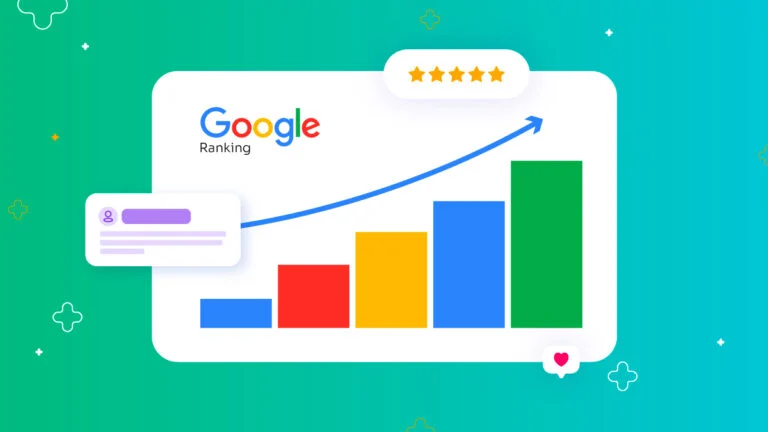Best Tips and Tricks: How Easily Rank Your Website #1 on the First Page of Google

Best Tips and Tricks to Easily Rank Your Website on the First Page of Google
Ranking a website on the first page of Google is the ultimate goal for many businesses, bloggers, and digital marketers. Achieving this can drive significant organic traffic, leading to more conversions, higher revenue, and greater online visibility. However, getting to that coveted spot requires a mix of strategy, patience, and continuous effort. Here are some of the best tips and tricks to help you rank your website on Google’s first page.
Table of Contents
1. Conduct Comprehensive Keyword Research
Keyword research is the foundation of any successful SEO strategy. It involves identifying the terms and phrases your target audience is searching for and optimizing your content around those keywords.
Tips:
- Use tools like Google Keyword Planner, Ahrefs, or SEMrush to discover high-volume, low-competition keywords.
- Focus on long-tail keywords. These are more specific phrases that may have lower search volume but higher intent, making them easier to rank for and more likely to convert.
- Analyze your competitors to see which keywords they’re ranking for and identify gaps you can fill.
Tricks:
- Consider user intent when selecting keywords. Ask yourself what the user is likely trying to achieve with their search and ensure your content provides the solution.
- Use latent semantic indexing (LSI) keywords, which are related terms that Google recognizes as contextually relevant to your main keywords.
2. Create High-Quality, Relevant Content
Content is king in the world of SEO. Google’s algorithms are designed to provide users with the most relevant and high-quality content for their queries. This means your content needs to be informative, engaging, and valuable to your audience.
Tips:
- Write comprehensive, well-researched content that thoroughly addresses the topic at hand.
- Ensure your content is easy to read by using short paragraphs, bullet points, and subheadings.
- Regularly update your content to keep it fresh and relevant.
Tricks:
- Use the skyscraper technique, which involves finding top-performing content in your niche and creating something even better.
- Incorporate multimedia elements like images, videos, infographics, and interactive tools to enhance user engagement and reduce bounce rates.
3. Optimize On-Page SEO Elements
On-page SEO refers to the optimization of individual pages on your website to improve their search engine rankings. This involves several elements that signal to Google what your content is about and how relevant it is to a user’s search query.
Tips:
- Ensure your target keyword appears in key places: the title tag, meta description, URL, and within the first 100 words of your content.
- Optimize your images by compressing them for faster loading times and using descriptive file names and alt tags that include your target keywords.
- Use internal linking to guide users (and search engines) to related content on your site, enhancing overall site structure and user experience.
Tricks:
- Implement schema markup (structured data) to help Google better understand your content and enhance how your pages appear in search results (e.g., rich snippets).
- Optimize your website’s meta tags (title tags and meta descriptions) to be compelling and keyword-rich, encouraging higher click-through rates (CTR) from the search results page.
4. Build High-Quality Backlinks
Backlinks, or inbound links from other websites to your site, are a crucial factor in Google’s ranking algorithm. High-quality backlinks from authoritative websites signal to Google that your content is credible and valuable, which can significantly boost your rankings.
Tips:
- Focus on earning backlinks from authoritative sites in your niche by creating high-quality content that others want to link to.
- Use guest posting to build relationships with other bloggers and websites in your industry, securing backlinks in return.
- Leverage broken link building, where you find broken links on other sites and offer your content as a replacement.
Tricks:
- Utilize social media and online communities to promote your content and attract natural backlinks.
- Conduct competitor analysis to discover where their backlinks are coming from and find opportunities to earn similar links.
5. Enhance User Experience (UX) and Site Performance
Google prioritizes websites that offer a great user experience. This means your website should be easy to navigate, load quickly, and be accessible across all devices. A positive user experience not only keeps visitors on your site longer but also signals to Google that your website is a quality resource.
Tips:
- Ensure your website is mobile-friendly, as mobile searches account for a significant portion of Google’s traffic.
- Improve site speed by optimizing images, leveraging browser caching, and minimizing code.
- Create a clean, intuitive navigation structure that makes it easy for users to find what they’re looking for.
Tricks:
- Use Google’s Core Web Vitals as a guide to optimizing your site’s performance. These metrics focus on loading speed, interactivity, and visual stability.
- Implement a responsive design that automatically adjusts your site’s layout based on the user’s device, ensuring a seamless experience across all platforms.
6. Leverage Social Signals
While social media signals aren’t a direct ranking factor in Google’s algorithm, they can still influence your SEO efforts. Social media can drive traffic to your site, increase brand awareness, and lead to more backlinks and engagement.
Tips:
- Share your content across all your social media channels and encourage your audience to do the same.
- Engage with your followers by responding to comments and messages, which can foster a loyal community that regularly interacts with your content.
- Use social media advertising to boost the visibility of your most important content.
Tricks:
- Create shareable content, such as infographics, memes, or viral videos, that naturally encourages users to spread your content across social media.
- Collaborate with influencers or industry leaders who can share your content with their audience, expanding your reach and potentially earning backlinks.
7. Monitor, Analyze, and Adapt
SEO is not a one-time effort but an ongoing process that requires continuous monitoring and adjustment. Regularly analyzing your website’s performance and making data-driven decisions can help you stay ahead of the competition and maintain your rankings.
Tips:
- Use tools like Google Analytics, Google Search Console, and other SEO software to track your site’s performance, including traffic, bounce rates, and keyword rankings.
- Regularly audit your site to identify and fix any technical issues that could be hindering your SEO efforts, such as broken links, duplicate content, or slow-loading pages.
- Keep an eye on your competitors’ strategies and adapt your approach to maintain your competitive edge.
Tricks:
- Set up alerts for any significant changes in your rankings, allowing you to respond quickly to algorithm updates or shifts in your industry.
- Use A/B testing to experiment with different strategies, such as varying your meta descriptions or trying new content formats, to see what resonates best with your audience.
Conclusion
Ranking your website on the first page of Google requires a combination of technical expertise, strategic content creation, and ongoing optimization. By conducting thorough keyword research, creating high-quality content, optimizing your on-page elements, building strong backlinks, enhancing user experience, leveraging social signals, and continuously monitoring your progress, you can improve your chances of reaching that coveted first-page position. Keep in mind that SEO is a long-term game, but with persistence and the right approach, your efforts will pay off in the form of increased visibility, traffic, and success.


